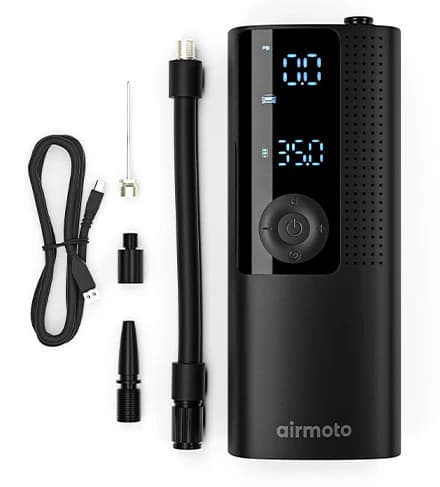- Published on
China Drafts ''Dream Team'' for Humanoid Robot Standards, Taps Founders of Unitree and AgiBot to Lead

Beijing moves to bring order to its booming humanoid robotics sector.
China’s Ministry of Industry and Information Technology (MIIT) on Monday published the proposed roster for a new Standardisation Technical Committee for Humanoid Robots, a government body tasked with writing the rulebook for the country's rapidly expanding industry.
The list of 65 members reads like a "who's who" of the Chinese robotics landscape, blending government regulators with the founders of the nation’s most prominent startups. Notably, Wang Xingxing, founder of Unitree Robotics, and Peng Zhihui, the co-founder of AgiBot (Zhiyuan Robotics), have been appointed as deputy chairs of the committee.
Their elevation to leadership positions signals a clear intent by Beijing to let the industry's leading engineers—rather than just bureaucrats—shape the technical standards for safety, hardware, and intelligence.
The "Dream Team" Roster
The committee is chaired by Xie Shaofeng of the MIIT, ensuring central government oversight. However, the operational leadership is heavily weighted toward industrial players and the newly formed state-backed innovation centers.
Joining Wang and Peng as deputy chairs are Jiang Lei of the National and Joint Innovation Center for Humanoid Robots (Shanghai) and Xiong Youjun of the Beijing Humanoid Robot Innovation Center. Jiang previously teased the formation of this committee at the Hongqiao forum earlier this month, citing a desperate need to align hardware specs to enable large-scale AI training.
The committee members represent a cross-section of China's tech ecosystem:
- Star Startups: The roster includes executives from major players such as UBTECH (Jiao Jichao), Robotera (Chen Jianyu), Galbot (Wang He), Fourier Intelligence (Cai Yusheng), and LimX Dynamics (Li Dapeng).
- Tech Giants: The list features representatives from Huawei (You Fang), ZTE (Zhao Zhiyong), and Baidu (Zhang Wei).
- Automotive Crossovers: Following its aggressive push into robotics, XPeng is represented by Huo Guojun, and Chery Automobile is represented by Zhang Guibing.
- Academia: Scholars from top institutions including Tsinghua University and Shanghai Jiao Tong University provide research backing.
This development follows our recent report on a similar concerted national effort in South Korea, where the government has formed the M.AX Alliance to unify over 1,000 companies, including industry giants like Samsung and Hyundai, with academic researchers to build foundational AI models for humanoids. This pattern highlights a growing trend of government-led coordination to accelerate the commercialization of advanced robotics.
Solving the "Standardization Crisis"
The formation of this committee comes at a critical juncture. As previously reported, industry leaders have warned that the fragmentation of hardware designs is stifling the development of "embodied intelligence".
At the Hongqiao forum, entrepreneurs argued that without standardized sensor configurations and data formats, training a "ChatGPT moment" model for robots is nearly impossible. By bringing competitors like Unitree and AgiBot—who are currently vying for market leadership and IPOs—onto the same committee, the MIIT appears to be forcing the collaboration necessary to build shared industrial baselines.
Global Context: The Race for Rules
China's top-down approach contrasts with the slower, consensus-based efforts occurring internationally.
In the West, organizations like the IEEE have only recently published roadmaps to begin the standardization process. Similarly, an ISO working group met in Barcelona last month to advance safety standards, a process insiders admit is lagging behind the aggressive deployment schedules of companies like Figure and Tesla.
With safety concerns mounting—highlighted by recent whistleblower allegations regarding robot strength in the US —China’s inclusion of safety bodies like the China Electronics Standardization Institute and the Ministry of Emergency Management on the committee suggests a focus on regulating physical risks as well.
Next Steps
The roster is currently open for public comment until December 24, 2025. Once finalized, this body will likely set the national standards for everything from battery safety to data interfaces, potentially giving Chinese manufacturers a unified framework that international competitors currently lack.
The glovebox essential currently seeing a major price drop.
This compact lifesaver was a top seller during last year's Black Week, and considering the current deal, it’s a steal. The Airmoto replaces bulky, corded compressors with a sleek, cordless unit that fits in your glovebox. It features a digital gauge with auto shut-off (just set the PSI and walk away) and includes adapters for cars, bikes, and sports equipment. A perfect "peace of mind" tool for any driver.
As an Amazon Associate, we earn from qualifying purchases at no additional cost to you.
Share this article
Stay Ahead in Humanoid Robotics
Get the latest developments, breakthroughs, and insights in humanoid robotics — delivered straight to your inbox.
